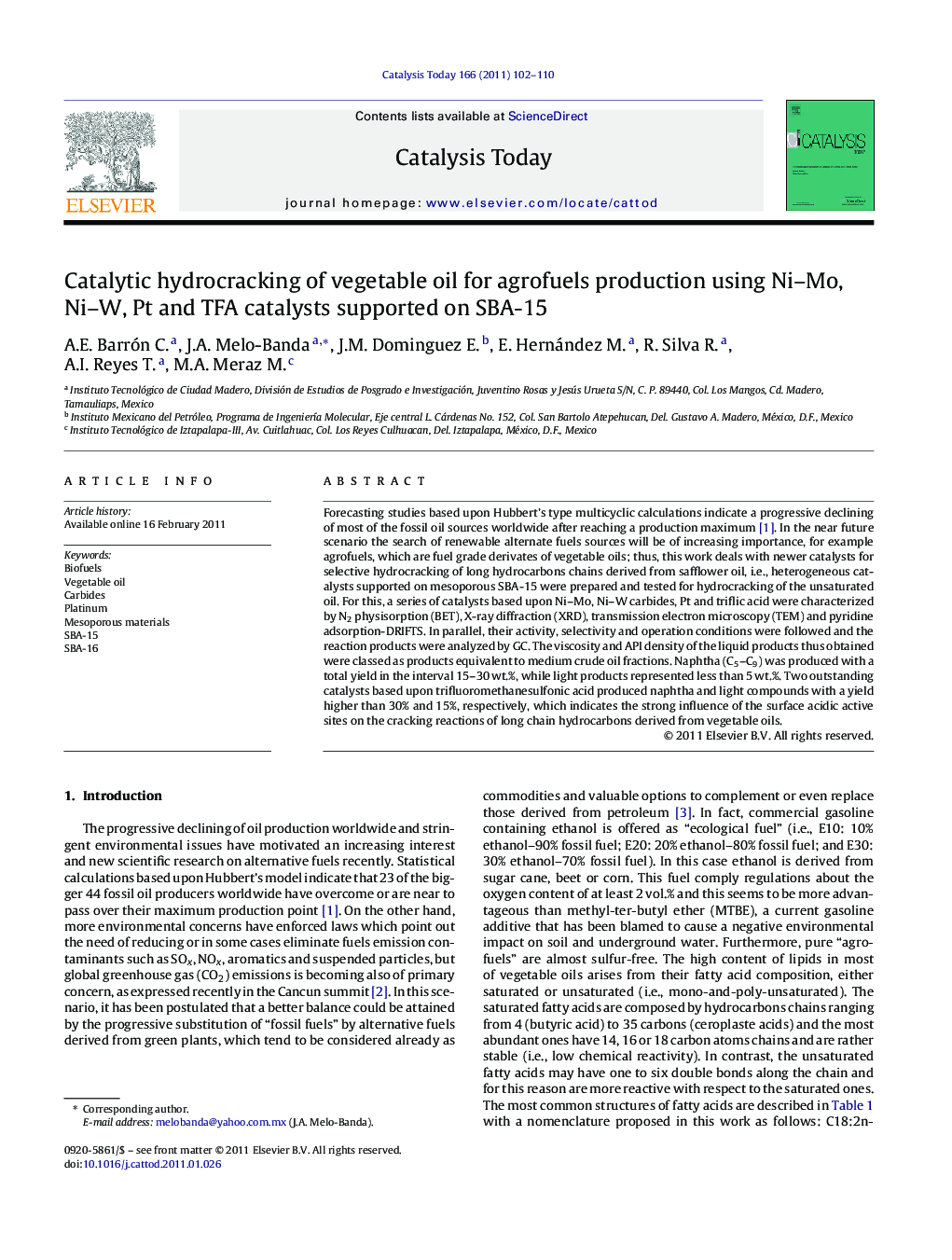| Article ID | Journal | Published Year | Pages | File Type |
|---|---|---|---|---|
| 55991 | Catalysis Today | 2011 | 9 Pages |
Forecasting studies based upon Hubbert's type multicyclic calculations indicate a progressive declining of most of the fossil oil sources worldwide after reaching a production maximum [1]. In the near future scenario the search of renewable alternate fuels sources will be of increasing importance, for example agrofuels, which are fuel grade derivates of vegetable oils; thus, this work deals with newer catalysts for selective hydrocracking of long hydrocarbons chains derived from safflower oil, i.e., heterogeneous catalysts supported on mesoporous SBA-15 were prepared and tested for hydrocracking of the unsaturated oil. For this, a series of catalysts based upon Ni–Mo, Ni–W carbides, Pt and triflic acid were characterized by N2 physisorption (BET), X-ray diffraction (XRD), transmission electron microscopy (TEM) and pyridine adsorption-DRIFTS. In parallel, their activity, selectivity and operation conditions were followed and the reaction products were analyzed by GC. The viscosity and API density of the liquid products thus obtained were classed as products equivalent to medium crude oil fractions. Naphtha (C5–C9) was produced with a total yield in the interval 15–30 wt.%, while light products represented less than 5 wt.%. Two outstanding catalysts based upon trifluoromethanesulfonic acid produced naphtha and light compounds with a yield higher than 30% and 15%, respectively, which indicates the strong influence of the surface acidic active sites on the cracking reactions of long chain hydrocarbons derived from vegetable oils.
